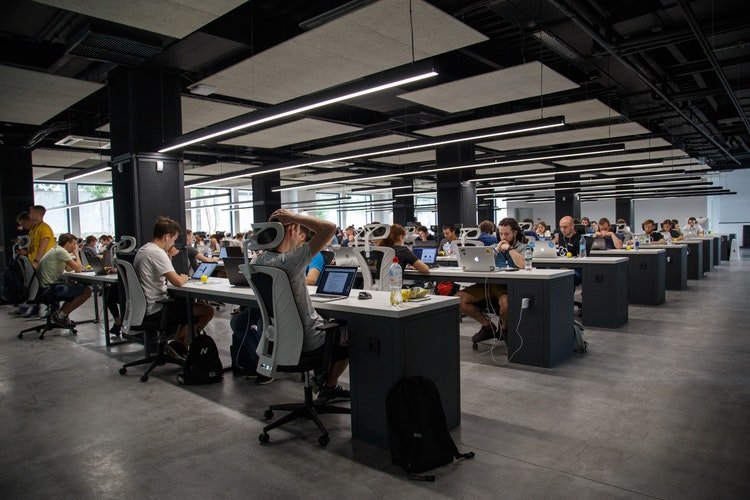Like any place you have to stay in regularly, furniture needs to be well-organised around the room with accommodations made for the user, and offices are no different. This is where office design comes in.
Many office workers have to work in offices that lack a cohesive, well-organised layout. Cramped desks pushed into corners, lack of visual and aural privacy between workers, wires trailing across the floors with nary a cable-tidy in sight, a lack of natural light, wildly varying temperatures, an overabundance of sound from work colleagues doing their job, cluttered workspaces, and so on. Some offices are repurposed commercial or residential buildings, which can mean cramped hallways, strange smells, flaking paint and creaking floorboards depending on how well-maintained it is.
These factors in office design can seriously affect how motivated and healthy your employees are. Lighting and decor can influence mood, which can affect work performance in the long term as motivation dissipates. There’s also the lack of personal privacy in certain office setups, which can be unnerving for many and cause anxiety or paranoia in people with mood or personality disorders.
Something as simple as the colour of a room can affect your employee’s moods: while your mileage may vary on colour preference, there’s a general trend towards bright, vibrant colours over drab, dark colours: something like sky-blue over a clinical shade of grey or a dark red. Other things, like the shade of lighting and plant decoration can really change the mood of a room.
Where to Start With Office Design
However, if you think your offices need an overhaul, it’s best to ask your employees first. Many employees may like the changes you make, but some may feel like they got the short end of the stick, particularly in subjective things like room colour or desk organisation. It can also reshape the dynamic between workmates if the desk arrangement is drastically changed, which can change the office atmosphere for the worse.
To organise a discussion around changing your office space, you could:
- Incorporate it into a meeting as a topic
- Set up an email chain or group chat to discuss the issue
- Set up a digital ballot box to gauge interest.
- Talk to each employee one-on-one to find common issues.
Another thing to consider is if your new furniture is on-brand. Do your office dividers match your company colours? Are your desks the same colour and height? While this may make buying furniture more expensive, it also provides consistency and cohesiveness to your office.
Perhaps the biggest factor in work-related illnesses, besides stress, are posture and ergonomics. Many office desks and chairs lack lumbar support or encourage the user the slouch over or lean forward, which puts strain on the back. Some desks are too low or too high, meaning the user has to keep their head at an awkward angle for long periods of time. Some desks are too cramped to keep the legs in a comfortable position, and so on. While some people generate these habits regardless of furniture choice, furniture that alleviates these problems will prevent your employees from getting into bad habits.
At the end of the day, your workers all have unique demands and requests for what they need from their office design, so make sure you’ve taken their considerations into account when you feel the need to change it.





